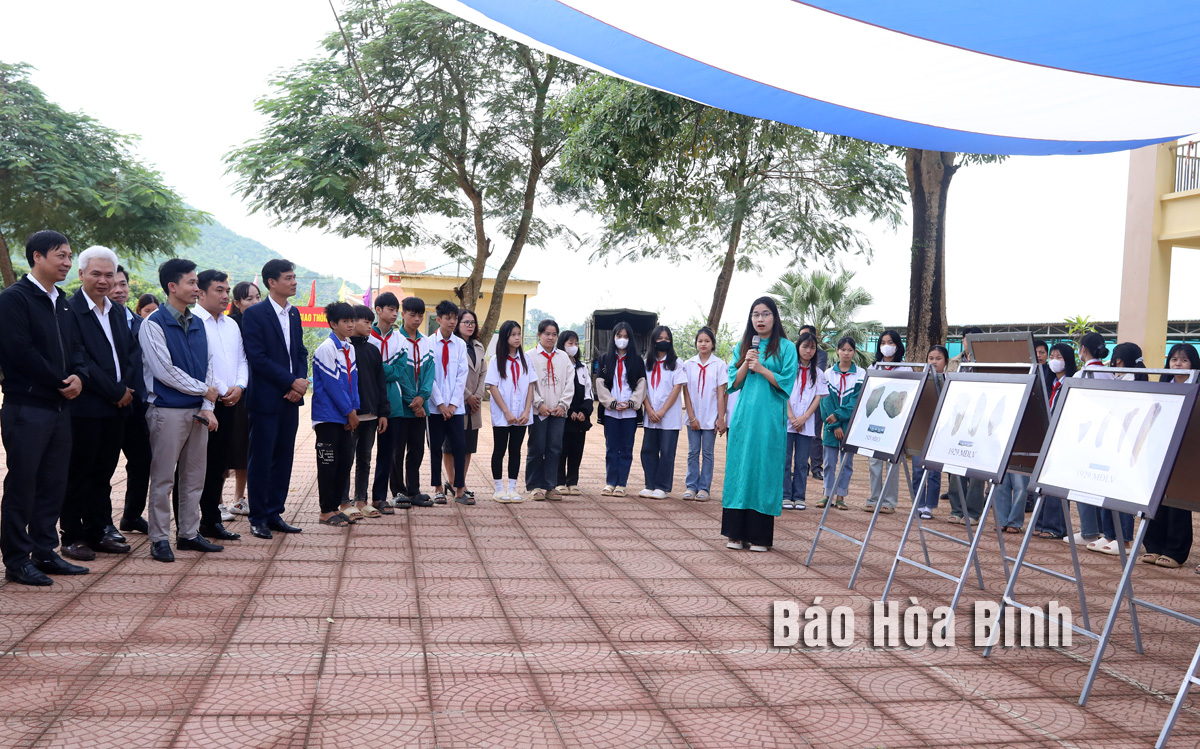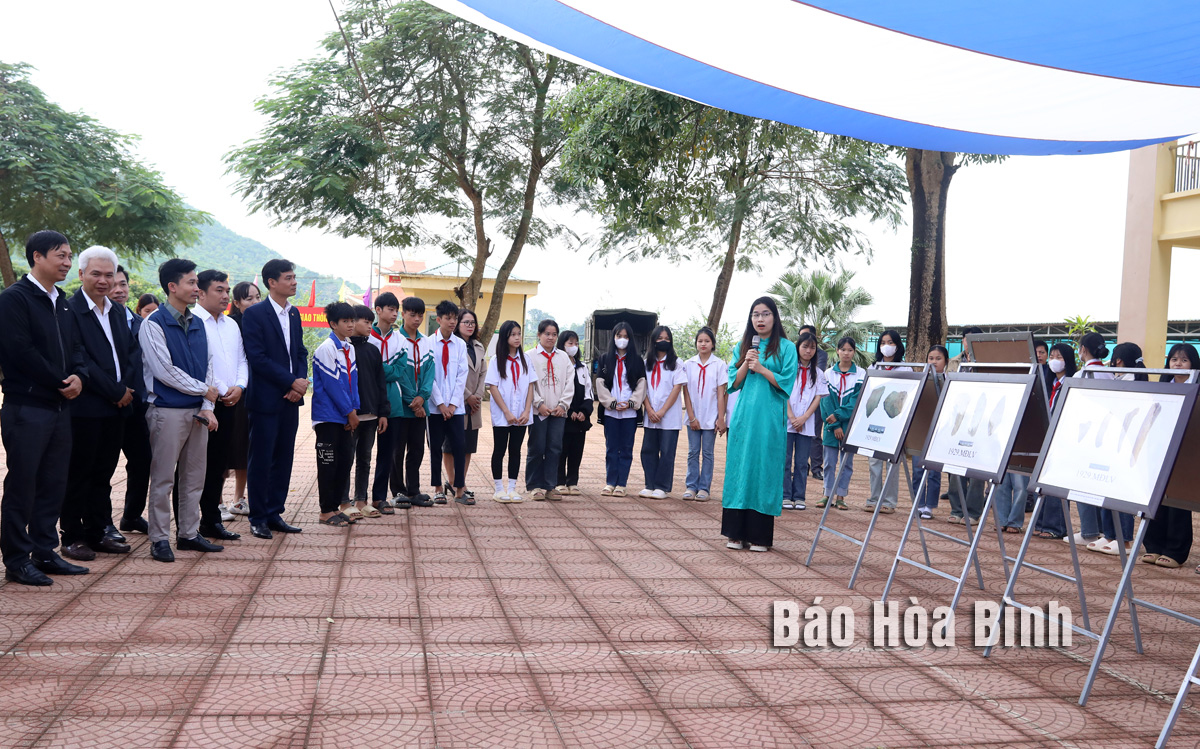
The Hoa Binh provincial Museum on October 28 organised a programme to disseminate the value of Vanh village stone shelter special national relic site, in Yen Phu commune, Lac Son district, at Yen Phu Primary and Secondary School, drawing the participation of nearly 200 students, staff members and teachers of the school.

Delegates and
students watch photos on display at the programme.
The students were introduced to the origin of the name
"Hoa Binh Culture", Trai hamlet’s cave in Tan Lap commune, and Vanh
village’s stone shelter; and watched photos featuring the research,
archaeological process and cultural activities related to the relic sites in
Lac Son district.
Notably, the stone shelter shows the characteristics of a
large relic site in the core area of Hoa Binh Culture in Vietnam. This is
evidence of the origin of Hoa Binh Culture in Vietnam and Southeast Asia.
It was recognised as a national archaeological site by the
Ministry of Culture and Information (now the Ministry of Culture, Sports and
Tourism) in 2003, and as a special national relic site by the Prime Minister in
July 2024.
The programme was a meaningful activity to raise awareness
and foster love for national culture and traditions among students. It was also
an opportunity for them to learn about and remember the historical values and
cultural beauty that have contributed to forming the identity of the homeland,
thereby joining hands to protect, preserve and promote traditional cultural
values.
With an increasingly vibrant and widespread emulation movement aimed at building cultured residential areas and cultured families, Yen Thuy District has been making steady progress toward improving both the material and spiritual well-being of its people, while fostering a civilized, prosperous, beautiful, and progressive community.
Once lacking recreational spaces and community facilities, Residential Group 2 in Quynh Lam Ward (Hoa Binh City) has recently received attention for the construction of a new, spacious, and fully equipped cultural house. The project followed the model of state support combined with public contributions in both labor and funding.
The "All people unite to build cultural life" movement, which has been effectively integrated with Kim Boi district’s socio-economic development goals, is fostering a lively spirit of emulation across local residential areas, hamlets, villages, public agencies, and enterprises. In addition, through the initiative, traditional cultural values are being preserved and promoted, while community solidarity and mutual support in poverty reduction and economic development are being strengthened.
A working delegation of the Hoa Binh provincial People’s Committee led by its Permanent Vice Chairman Nguyen Van Toan on June 11 inspected the progress of a project to build the Mo Muong Cultural Heritage Conservation Space linked to tourism services in Hop Phong commune, Cao Phong district.
Born and growing in the heroic land of Muong Dong, Dinh Thi Kieu Dung, a resident in Bo town of Kim Boi district, in her childhood was nurtured by the sweet lullabies of her grandmother and mother. These melodies deeply imprinted on her soul, becoming an inseparable part of her love for her ethnic group's culture. For over 20 years, this love for her hometown has driven Dung to research, collect, and pass down the cultural values of the Muong people to future generations.
In the final days of May, the Ethnic Art Troupe of Hoa Binh Province organized performances to serve the people in remote, mountainous, and particularly disadvantaged areas within the province. These were not just ordinary artistic shows, but they were the meaningful journeys aimed at spreading cultural values, enhancing the spiritual life of the people and contributing to the preservation of ethnic minority cultural identities.



